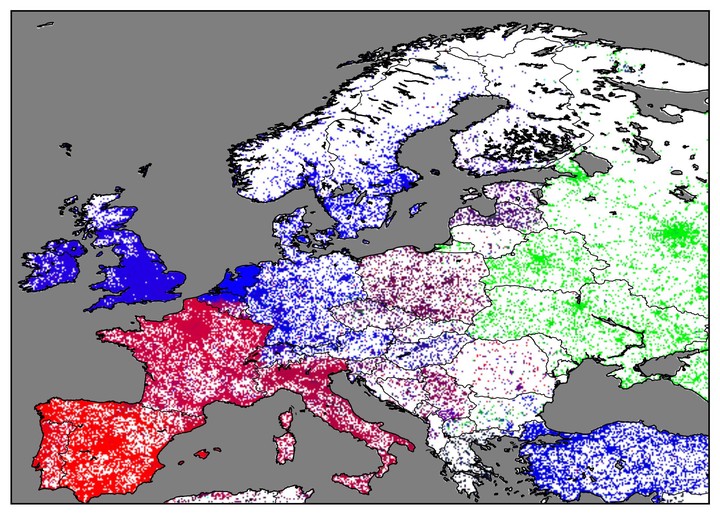 Learned Language Differences across the Continent
Learned Language Differences across the Continent
Abstract
Geotagged Twitter data allows us to investigate correlations of geographic language variation, both at an interlingual and intralingual level. Based on data-driven studies of such relationships, this paper investigates regional variation of language usage on Twitter across Europe and compares it to traditional research of regional variation. This paper presents a novel method to process large amounts of data and to capture gradual differences in language variation. Visualizing the results by deterministically translating linguistic features into color hues presents a novel view of language variation across Europe, as it is reflected on Twitter. The technique is easy to apply to large amounts of data and provides a fast visual reference that can serve as input for further qualitative studies. The general applicability is demonstrated on a number of studies both across and within national languages. This paper also discusses the unique challenges of large-scale analysis and visualization, and the complementary nature of traditional qualitative and data-driven quantitative methods, and argues for their possible synthesis.